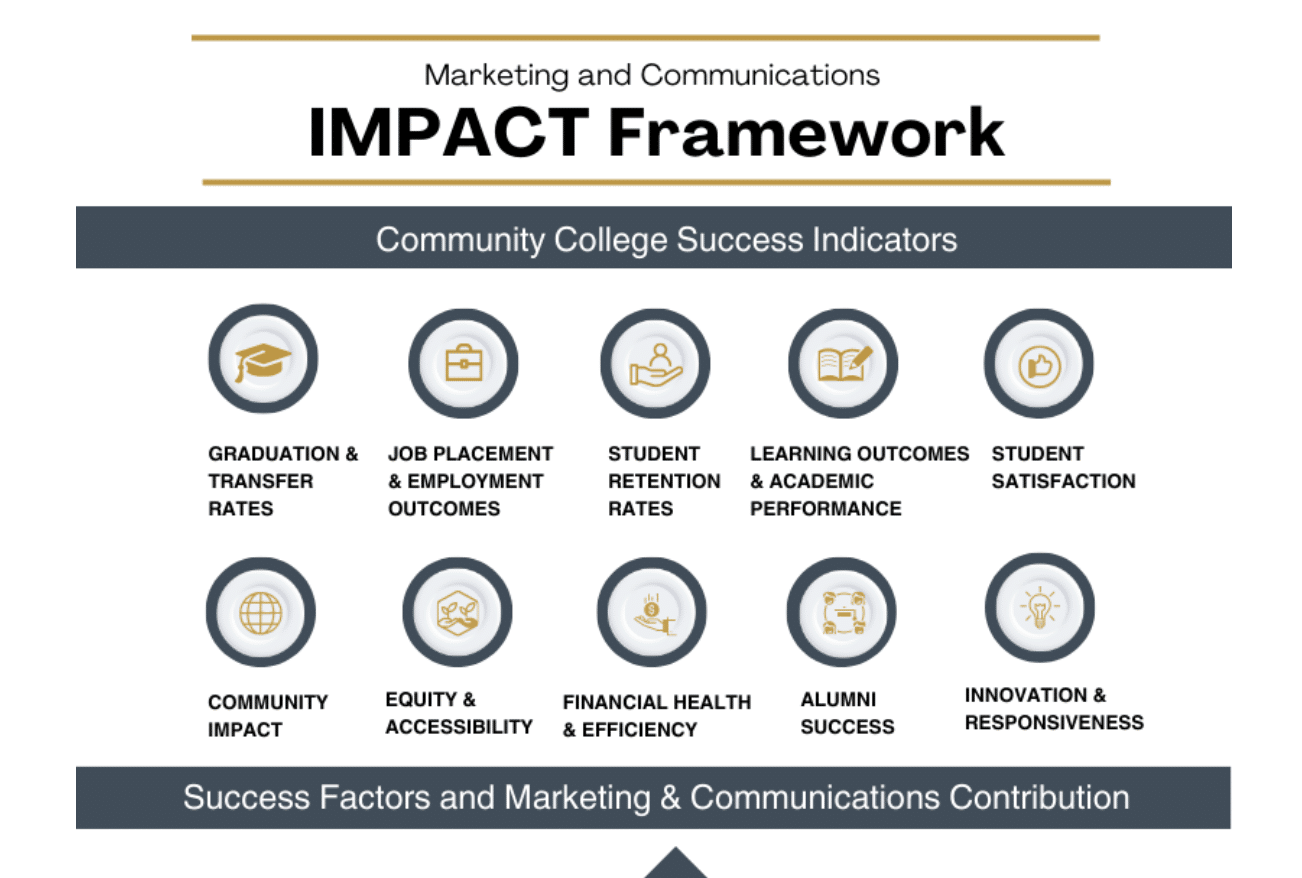In this episode, Maya sits down with Amy Filardo, Chief Marketing Officer at the Community College of Baltimore County (CCBC), to discuss how she led a major transformation in CCBC’s marketing functions. Amy shares insights into integrating continuing education and academic marketing, streamlining workflows, and adopting a more digital-first approach. She also highlights key lessons learned along the way and the impact these changes have had on enrollment.
How Was CCBC’s Marketing Structured Before the Reorganization?
- CCBC previously had two separate marketing teams: College Communications and Continuing Education Marketing.
- College Communications focused on branding, public relations, and general college marketing.
- Continuing Education Marketing concentrated on enrollment and recruitment for non-degree programs.
- The decision to integrate these teams was driven by CCBC’s vision for a unified student experience.
What Approach Did Amy Take to Integrate the Teams?
- Conducted a listening tour to understand existing strengths and challenges.
- Focused on aligning marketing efforts with a central goal: increasing enrollment.
- Shifted from a print-first to a digital-first strategy to ensure the website became the primary source of information.
- Improved coordination between different departments to create a seamless communication process.
Key Challenges and Surprises Along the Way
- The heavy reliance on print materials, leading to inconsistencies between flyers and web content.
- The complexity of CCBC’s Continuing Education programs, which operate almost like a college within a college.
- The need to educate internal stakeholders on marketing’s evolving role and the benefits of centralization.
- Ensuring the new marketing structure addressed the diverse needs of credit and non-credit programs.
What Does CCBC’s Marketing Team Look Like Today?
- Four key directors now report to Amy:
- Director of Creative Services: Oversees graphic design, print materials, and videography.
- Director of Communications: Manages PR, social media, and institutional messaging.
- Director of Digital Strategy: Focuses on the website, digital ads, and online presence.
- Director of Enrollment Marketing: Works across departments to drive student enrollment.
- A new Project Coordinator role was introduced to streamline project intake and execution.
- Improved collaboration between teams by consolidating them into a single office space.
Successes and Results of the Transformation
- Enhanced collaboration and communication among marketing staff.
- Launched a new, more user-friendly website with accurate, up-to-date content.
- Implemented a new CRM system (Element 451) to streamline student communications.
- Increased enrollment, surpassing enrollment goals for nine consecutive credit enrollment cycles.
- 15% growth in Continuing Education enrollment since the marketing restructure.
Lessons Learned and Next Steps
- Constant communication is key to ensuring faculty and staff know how to work with the marketing team.
- A structured project request system helps manage workload efficiently.
- Shifting to a proactive approach allows marketing to plan ahead rather than just react to requests.
- Marketing continues to evolve, and the team is focused on refining strategies and increasing engagement.
Final Thoughts
Amy’s leadership at CCBC showcases the power of strategic marketing integration in higher education. Her journey highlights the importance of aligning marketing efforts with institutional goals, embracing digital transformation, and fostering strong internal partnerships. If you’re in marketing or higher education, there’s plenty to learn from this episode!

